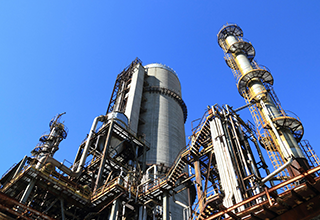
search
Refrigeration systems are like magic machines that move heat from one place to another, making things cool. Let’s break down how they work, piece by piece, and explore their key parts and functions.
Every refrigeration system has four main parts, each with a specific job to do:
The Compressor
What it does: It squeezes the refrigerant gas, making it hot and high-pressure.
Why it matters: Without the compressor, the refrigerant wouldn’t move through the system, and no cooling would happen.
The Condenser
What it does: It cools the hot, high-pressure gas, turning it into a liquid and releasing heat into the air.
Why it matters: This is where the system gets rid of the heat it has collected.
The Expansion Valve or Capillary Tube
What it does: It reduces the pressure and temperature of the liquid refrigerant, preparing it for the next step.
Why it matters: This part controls how much refrigerant flows into the evaporator and ensures it’s at the right temperature for cooling.
The Evaporator
What it does: It lets the cold, low-pressure liquid refrigerant evaporate, absorbing heat from the surroundings and making things cool.
Why it matters: This is where the actual cooling happens—it’s the heart of the system.
The refrigeration cycle is like a relay race, with four stages happening one after the other:
Compression
The compressor takes in low-pressure gas and squeezes it into hot, high-pressure gas, ready for the next step.
Condensation
The hot gas goes to the condenser, where it cools down and turns into a liquid, releasing heat into the air.
Throttling
The high-pressure liquid passes through the expansion valve, where its pressure and temperature drop sharply.
Evaporation
The cold liquid enters the evaporator, absorbs heat from the surroundings, and turns back into a gas, cooling the area.
Modern refrigeration systems are smarter than ever, thanks to advanced controls that keep things running smoothly:
Startup Sequence
The evaporator starts first, especially in water-based systems, to avoid problems like liquid flooding when the compressor kicks in. The condenser starts a bit later, depending on the system size.
Types of Control Systems
Open-Loop Control: This system follows preset instructions without checking the results.
Closed-Loop Control: This system uses sensors to monitor things like temperature and pressure and adjusts itself in real time to stay on track.
How the Controls Work
Temperature Control: Sensors watch the temperature and adjust the compressor to keep things cool.
Pressure Control: Sensors make sure the refrigerant pressure stays safe, tweaking the system if needed.
Flow Control: The expansion valve adjusts how much refrigerant flows into the evaporator to match the cooling demand.
Start-Up Order: The system starts the evaporator side first to warm things up or cool things down before the compressor starts.
Combined Cooling Systems
Heat Removal: The extra heat from these devices must be managed.
System Balance: The cooling devices must work well with the evaporator.
Energy Use: The energy cost of these devices must be worth the extra cooling.
Adding extra cooling devices, like thermoelectric coolers, before the evaporator can boost cooling power. But there are challenges:
Liquid Subcooling and Suction Superheating
Liquid Subcooling: Cooling the refrigerant liquid below its normal temperature at the condenser outlet improves efficiency.
Suction Superheating: Warming the refrigerant gas before it enters the compressor prevents liquid damage, but too much warming wastes energy.
Refrigeration systems work by moving heat in a cycle of compression, condensation, throttling, and evaporation. While the basic idea is the same for all systems, modern advancements in controls and efficiency improvements, like combined cooling and subcooling, have made them more effective and reliable. Understanding these principles helps us design and use refrigeration systems that are both powerful and efficient.
